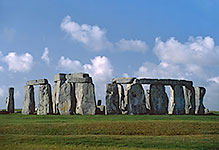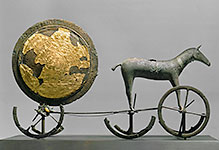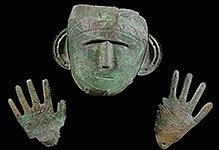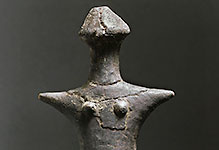
Prehistory
Palaeolithic, Neolithic, Bronze Age and Iron Age.

#03050466
The Londesborough Brooch, Irish, 8th-9th century. The Londesborough brooch is un...

#03050663
Lady of Elche. Painted limestone bust; from L'Alcúdia, Spain; 4th century BCE....

#03050664
Bronze dagger and scabbard with figures of animals. Celtic; 6th century BCE.

#03050665
Bronze fibula in shape of a human figure. Celtic; from Hradek near Manetin, Boh...

#03050666
Animal merchant. Detail of the middle zone of the embossed and engraved sheet-b...

#03050667
Bronze leaf depicting woman in sacred ceremonial dress. From Este, Italy; 6th c...

#03050668
Terracotta ossuary. From Este, Italy; 8th century BCE.

#03050669
Bronze-mounted wooden bucket. Celtic; from Aylesbury, Great Britain; 1st centur...

#03070126
Head of Gaul,from the Monastery of Tapa-Kalan, Hadda,Afghanistan. 3rd-4...

#03070127
Head of Gaul,from the Monastery of Tapa-Kalan, Hadda,Afghanistan. 3rd-4...

#03070150
Stone relief from the Apadana (audience hall) at Persepolis, Achaemenid Persian,...

#03070152
Gold model chariot from the Oxus treasure, Achaemenid Persian, from the region o...




